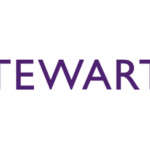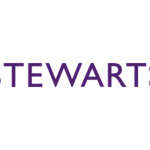For any lawyer or law firm of note, being listed by The Legal 500 and Chambers & Partners directories is a must: it serves to underline their status and validate their expertise. Clients are reassured that they are being legally advised by someone who is independently judged to be among the leaders in their field. Listings confirm market credibility, support the recruitment of talent and potentially attract new business. Every lawyer in every law firm knows this – or at least they should.
For law firm marketeers, the directory process is a critical part of their annual cycle. Compiling information and submitting directory entries is challenging and time-consuming. Some firms find themselves with thousands of pages of information to prepare, present and submit – in the correct format and according to directory deadlines and criteria.
The directories have been part of the legal landscape for 35 years, becoming mandatory reference tools for GCs, clients, lawyers and law students. Based on extensive market research and client/referee submissions, they identify and recommend the best firms and practitioners in multiple practice areas, subdivided into graduated bands or rankings, each fully supported by independent editorial analysis.
Between them, the most recent UK editions of the two leading directories list nearly 12,000 lawyers who are recognised as leaders in their respective fields. Of the 172,500 practising lawyers in the UK – 156,000 solicitors and 16,500 barristers – this elite group represents roughly 7% of the total. The harsh reality is that if a lawyer or law firm is not rated by either directory, they are probably not perceived by the market as a key player, which means that potential clients are less likely to use them.
Where to start
Marketing teams at the largest law firms dedicate internal resources to the task, and also work with external directories support specialists, giving them a comparative advantage in creating professional submissions. Smaller and medium sized firms need to emulate this practice, and also be highly organised and acutely focused in their approach.
At the outset of the process, it is best to hold a kick-off meeting to decide exactly what you are going to say and circulate previous relevant submissions and referees in advance.
This initial meeting of lawyers and marketeers should determine exactly what the aspirations/expectations are in each directory section a firm is submitting to. In practical terms, this should also include: the process and timetable, including internal and external deadlines, an outline of objectives and strategy, and confirmation of which matters and referees can and will be used. This initial meeting should conclude with participants having a good idea of the following:
- which categories to submit for
- which referees to submit (The Legal 500 invites firms to supply as many as you like)
- which matters to include (up to 20 per submission)
- which team members to profile
- the key points which set the firm and the team apart from competitors’ realistic ranking aspirations
- responsibilities and deadlines for all contributors to the submission.
Referees
Start with the referees first.
Referees independently validate the quality of work and service delivered by firms and individual lawyers. Selecting the right referees and managing them properly is one of the more important ways firms can control the quality of information that reaches directories researchers.
When everyone has sent their referee nominations internally, run checks to confirm who they know and have worked with recently at the firm. This helps avoid duplicate approaches across different practice areas.
The fee-earner who knows the contact best should phone or email to make sure that they meet the criteria listed below, and to secure their commitment to responding to the feedback request by the deadline.
When selecting referees, there are two essential criteria. It is very important that they:
- have worked with you in the last 12 months
- are likely to respond.
Effective management of the referee process is critical to maximise response rates. It is helpful to agree with referees which fee-earners and teams they will provide testimonials on; keep them informed of the research timetable and encourage them to look out for and respond to research emails.
Referee tips
Managing referees can be challenging. Listed below are more detailed tips on how to maximise the response.
- Manage the process. All too often an afterthought, referees should not be left until the last minute. They are just as important as any other part of the submissions process and should be treated with the same priority.
- Manage duplications. Get all your referees together two weeks ahead of the deadline. Identify duplicates so multiple teams are aware they’re submitting the same person. Check whether the directory prefer referees to be submitted once, or if they should be submitted separately for each section they can attest to.
- Choose referees who are likely to respond.
- If frustrated with your rankings and comments, be careful when submitting your referees again and consider investing in products some directories offer to provide additional insight. A good example is The Legal 500’s Research+ service (legal500.com/research-plus), which offers helpful advice and analysis of submissions quality along with insight into what researchers are looking for.
- Get creative. Referees do not have to be clients. Intermediaries such as barristers, overseas lawyers, accountants, actuaries, expert witnesses, and so on often give a good account of others they have professional relationships with.
- Communicate. Talk to each referee to get permission to put them forward, and their commitment that they will respond to feedback requests from all the directories you are submitting to. Ask for feedback on your team and work.
- Keep an eye on the research. When research dates and researcher names are announced, refresh your referees with a call or email giving them the details, and prompt them to look out for directory emails.
Submissions
The directories use submissions to inform their research, corroborate ranking decisions, and support their editorial analysis. When drafting, consider the audience of researchers who will receive them. Think of them as readers, rather than arbiters. Since they will each have hundreds of documents and even more comments to evaluate as part of their job, submissions need to be clear, concise and accurate.
Being clear and concise is crucial. In work highlights, avoid unnecessarily complex detail and jargon. Matters should be summarised in plain English, not legalese.
Typically, up to 20 work highlights are allowed, divided between publishable and confidential. Select matters led by individuals who are being profiled for a ranking in the submission; disclose as much information as possible, remembering that if you clearly mark certain details as confidential, then these will remain so. Nevertheless, this of course needs to be balanced within the bounds of client confidentiality. Develop a ‘thesis’ – what story do these matters tell the reader about your firm, that distinguishes it from others the researcher will analyse?
Market Feedback
It is helpful to researchers and reflects well on your firm if you give market insights on your peers. For example, let the directories know which of your competitors should be ranked more or less highly, and where you think you should be ranked, and why.
Similarly, giving detailed feedback of the barristers and QCs you work with helps the directories and is an opportunity to showcase your relationships and demonstrate the level at which your firm is operating.
Interviews
It is useful to arrange interviews with researchers in a timely manner. The main purpose of these interviews from the researcher’s perspective will be gathering market feedback and intelligence from your firm. But these interviews are also an opportunity for you to add further colour around your submissions and to firmly establish your firm in the minds of the relevant researchers for each directory section for which you are submitting.
Content
Style and clarity are important. Draw out each matter’s significance for the client and the wider market. In doing so, be clear on your firm’s role: give a high-level summary of what you did, avoiding technical jargon and excessive detail. Place it in context: how did your advice help the client advance their objectives? What was new and interesting about it? Formatting also matters: guide the reader around with paragraphs headed ‘Our role’ and ‘Significance’, or similar signposting.
Researchers are extremely adept at spotting any copy that is recycled or out of date. Long-running matters carried over from a previous submission can be included and must be updated. It is also possible to sweep up multiple matters for a single client, or on a single theme, into one work highlight. Use bullet points to keep descriptions like these impactful. A handful of sweep ups on any one submission is perfectly acceptable.
Because the directories do not publish anything that is marked as confidential, you can include as much information as you feel is appropriate. If the significance of the matter is made very clear, there may not always be any need to include every confidential detail, though if matters do not name the parties, or provide information regarding the size of the deal, they will likely need to be particularly well drafted with a strong, compelling narrative, to communicate effectively the importance of the matter in question.
Diversity and ESG
It is important to remember that clients are making significant demands on law firms in relation to diversity and the wider environmental, social and governance (ESG) agenda. Both The Legal 500 and Chambers have begun to reflect this in recent years. ‘We’ve made progress with diversity at all levels in the rankings this year,’ wrote Georgina Stanley, editor of The Legal 500 UK, in December 2021. ‘These increases are not token gestures made simply to make our data look better. They reflect a very conscious effort on the part of our research team to identity the most deserving female talent in London and beyond.’ Carefully considered submissions are your firm’s opportunity to showcase the diversity of its best lawyers.
GCs are also comparing the wider performance of law firms in addressing ESG issues when choosing providers. Directories will continue to evolve to meet the priorities of the clients that use them to select law firms. The Legal 500’s Global Green Guide (legal500.com/global-green-guide) is one example. To keep ahead in their directory rankings, it may be prudent for law firms to consider these trends in client concerns in their current recruitment plans and operational strategies – as well as in their directory submissions!
Maltin PR is an award-winning and internationally recognised London-based Legal and Litigation PR firm specialising in Legal PR, Litigation PR, Litigation Support, Crisis Communication, and Reputation Management.For more information, please contact:

(L-R) Tim Maltin, managing partner, Alastair Mitchell, directories associate, Lucy Lissack, senior account manager, Maltin PR
Maltin PR, Aldwych House, 71-91 Aldwych, London, WC2B 4HN
T: 020 3983 4118
E: enquiries@maltinpr.com or directories@maltinpr.com
For more information on The Legal 500’s submissions process visit legal500.com/faqs












